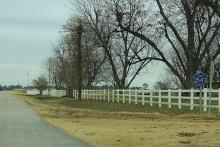Pemiscot-Dunklin Electric Cooperative Steps Up, Offers FTTH in Missouri's Bootheel - Community Broadband Bits Podcast 344

Missouri is one of the states where electric cooperatives are taking the lead in bringing high-quality Internet access to rural areas. This week, we talk with Jack Davis, Vice President of IT and Special Projects at Pemiscot-Dunklin Electric Cooperative. The co-op is in the midst of deploying Fiber-to-the-Home (FTTH) to members in their service area, located in Missouri’s “Bootheel” region.
The mostly agricultural area consists of three counties that extend down from the southeast corner of Missouri and is surrounded by Arkansas, Tennessee, and Kentucky. The co-op brought electric service to homes in the region in the 1930s and Jack and his colleagues are performing a similar service today by bringing broadband to a region where large corporate ISPs haven't invested much in infrastructure. In this interview, he describes what Internet access is like for people in the region before the cooperative decided on the project, and how strong support from residents and businesses has helped the cooperative determine the services to offer.
Jack and Christopher also discuss how the geography and environment influenced engineering and design plans, how locals are responding to the new service, and potential plans for growth in the region. In this conversation, you’ll also hear about some of the partnerships that Pemiscot-Dunklin has forged with other cooperatives in order to offer better services to cooperative members.
This show is 26 minutes long and can be played on this page or via Apple Podcasts or the tool of your choice using this feed.
Transcript below.
We want your feedback and suggestions for the show-please e-mail us or leave a comment below.
Listen to other episodes here or view all episodes in our index. See other podcasts from the Institute for Local Self-Reliance here.
Thanks to Arne Huseby for the music. The song is Warm Duck Shuffle and is licensed under a Creative Commons Attribution (3.0) license.


